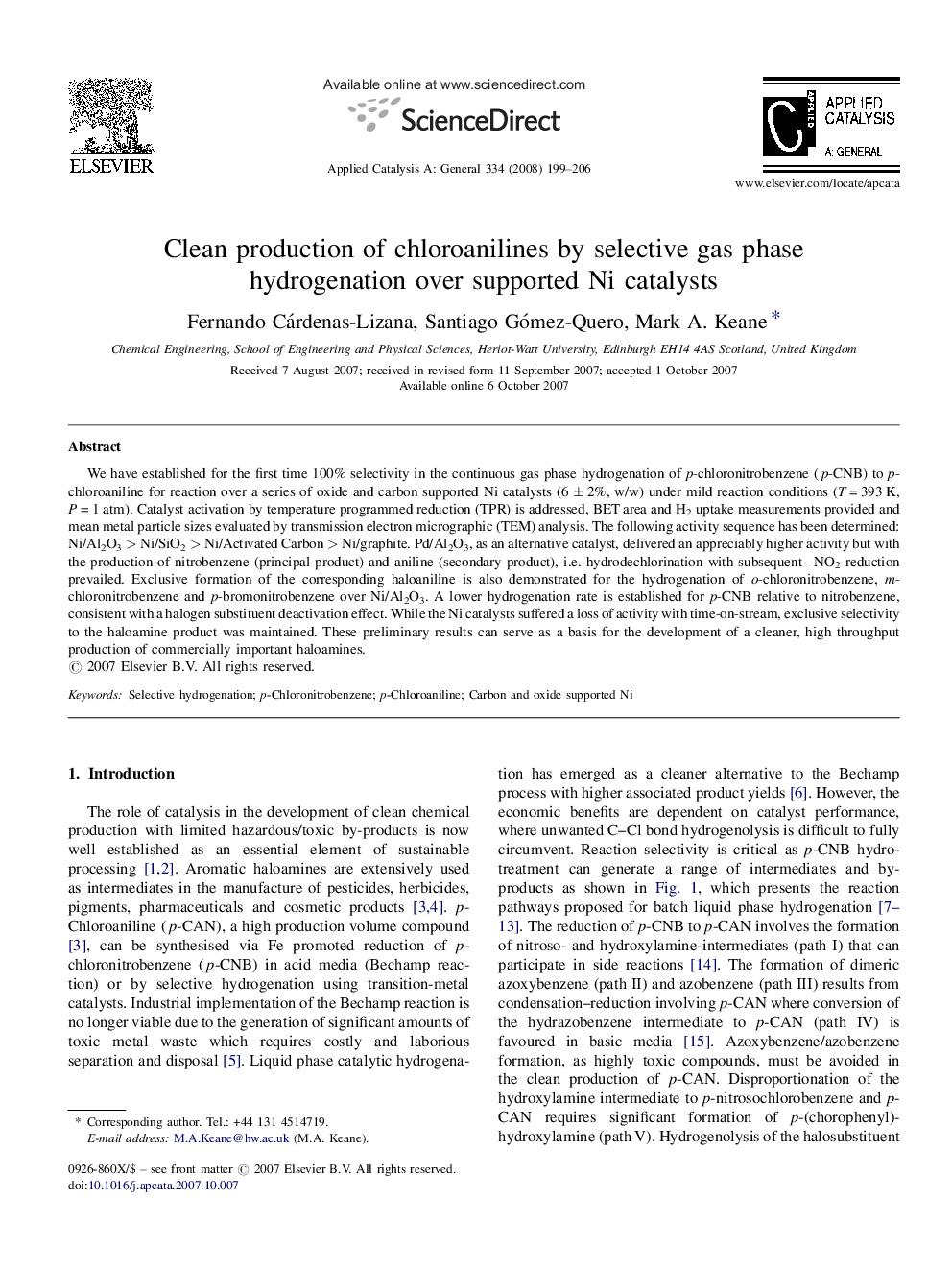| Article ID | Journal | Published Year | Pages | File Type |
|---|---|---|---|---|
| 43208 | Applied Catalysis A: General | 2008 | 8 Pages |
We have established for the first time 100% selectivity in the continuous gas phase hydrogenation of p-chloronitrobenzene (p-CNB) to p-chloroaniline for reaction over a series of oxide and carbon supported Ni catalysts (6 ± 2%, w/w) under mild reaction conditions (T = 393 K, P = 1 atm). Catalyst activation by temperature programmed reduction (TPR) is addressed, BET area and H2 uptake measurements provided and mean metal particle sizes evaluated by transmission electron micrographic (TEM) analysis. The following activity sequence has been determined: Ni/Al2O3 > Ni/SiO2 > Ni/Activated Carbon > Ni/graphite. Pd/Al2O3, as an alternative catalyst, delivered an appreciably higher activity but with the production of nitrobenzene (principal product) and aniline (secondary product), i.e. hydrodechlorination with subsequent –NO2 reduction prevailed. Exclusive formation of the corresponding haloaniline is also demonstrated for the hydrogenation of o-chloronitrobenzene, m-chloronitrobenzene and p-bromonitrobenzene over Ni/Al2O3. A lower hydrogenation rate is established for p-CNB relative to nitrobenzene, consistent with a halogen substituent deactivation effect. While the Ni catalysts suffered a loss of activity with time-on-stream, exclusive selectivity to the haloamine product was maintained. These preliminary results can serve as a basis for the development of a cleaner, high throughput production of commercially important haloamines.
Graphical abstractThe catalytic reduction of p-chloronitrobenzene (p-CNB) to commercially important p-chloroaniline (p-CAN) can generate a range of intermediates and unwanted by-products (see figure); we have established 100% selectivity to p-CAN in continuous gas phase reaction over oxide and carbon supported Ni catalysts under mild reaction conditions (T = 393 K, P = 1 atm).Figure optionsDownload full-size imageDownload as PowerPoint slide
